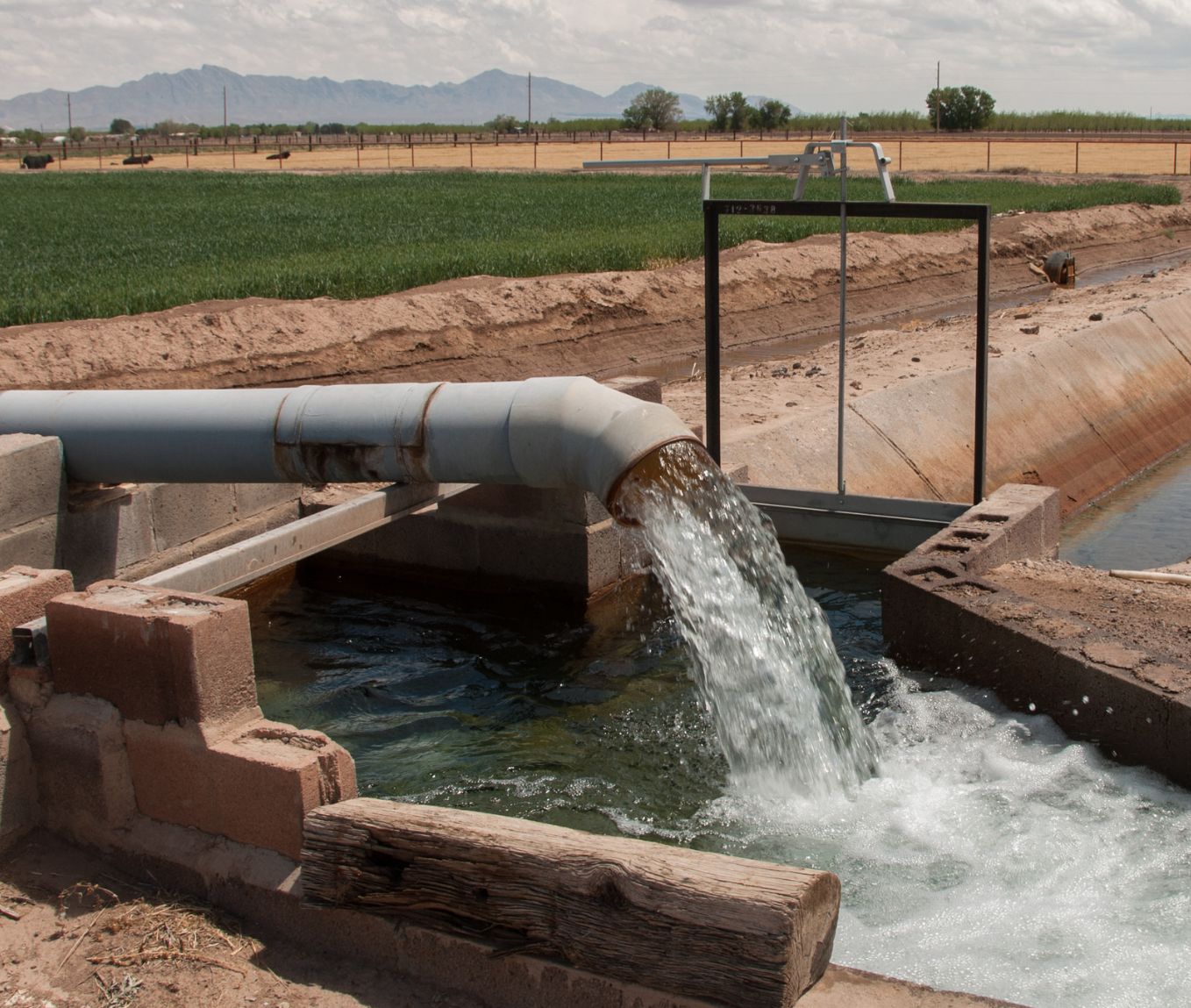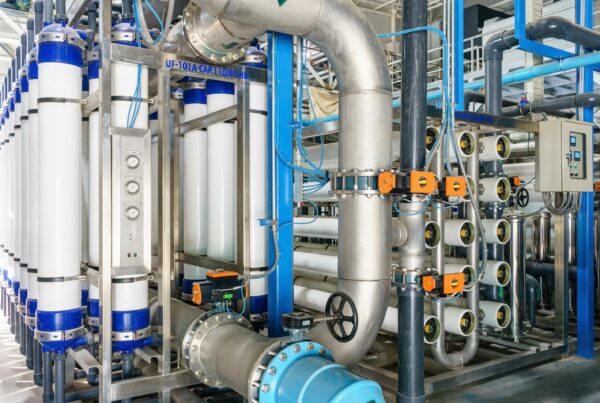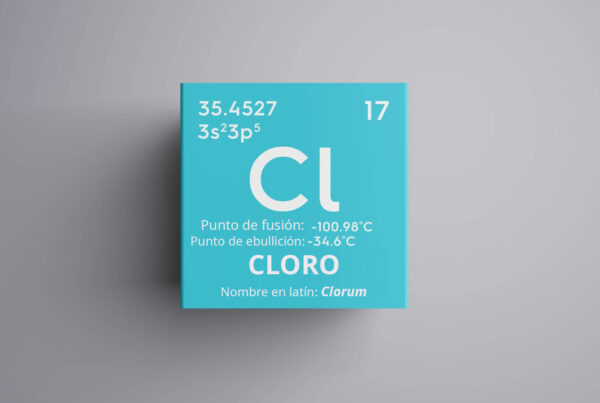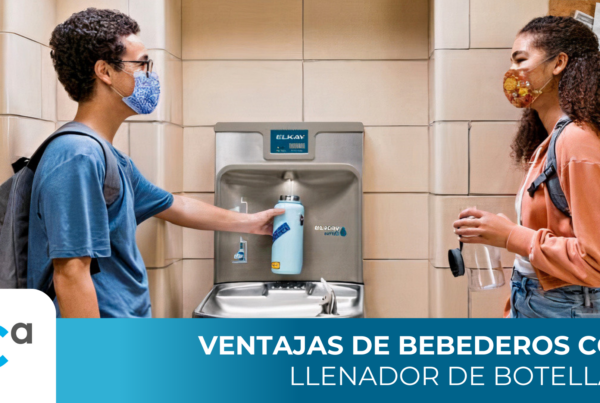Treatment for disinfection and purification of well water
Deep well water seeps naturally into the ground and can be in very good condition. However, depending on the type of soil, contamination points near the well may have bacteria, organic elements and minerals harmful to health. The well water treatment process consists of eliminating from the water the parameters that affect the health or specific use that a process or equipment requires.
Analyze water and soil quality
Much of the minerals and compounds in the water are due to the composition of the soil. Also, there could be infiltrations of sewage with bacteria (such as Giardia or Cryptosporidium) that are imperceptible to the sense of smell, nor do they have a taste or appearance to the naked eye. The wells may be affected by urban or domestic discharges near the property or because polluting industrial activities may have been carried out there.
Before any other step, the first thing to do is to make a water analysis. We recommend looking for a certified laboratory near your location that is capable of having the most reliable results. It must be taken into account that for the bacteriological analysis to be valid, it must be carried out within a period of no more than 4 hours.
We recommend a physical-chemical analysis, in addition to iron and microorganisms (viruses, bacteria and parasites).
In addition to color, odor, turbidity, pH, fixed residue, conductivity, hardness, calcium, magnesium, alkalinity, sulfate, nitrate, nitrite, ammonium, residual chlorine and oxidability.
Before starting to treat water, it is important to know its origin and quality. The source is the place where your well or spring is located. Water quality depends on several factors:
- Water hardness – A measure of the amount of calcium and magnesium ions present in water (measured in ppm).
- Water temperature – Temperature affects both taste and odor. The colder it gets outside, the more likely you are to notice a difference in taste because lower temperatures cause freezing inside the pipes that carry hot and cold water throughout your home or commercial building.
The parameters of physicochemical analysis of water to make it potable for human consumption, as established by Standard 127 NOM-127-SSA1-1994 for human use, require a series of tests on the water to check the permissible limits of water quality and, in turn, the treatments described below. We have the service of water analysis, but we put at your disposal a directory of laboratories tested by CONAGUA: Comisión Nacional del Agua (conagua.gob.mx) by state.
Flow rate of water to be treated from the well
Water flow or flow rate refers to the amount of water flowing in a given time through a channel, pipe or other conduit. It is measured in units of volume per unit of time, for example: liters per second (LPS) or gallons per minute (GPM) or cubic meters per hour (m³/h).
Water flow can be affected by several factors, such as diameter and shape of the conduit, water velocity, viscosity of the liquid, temperature, pressure and density of the water, among others. It can also be affected by external factors, such as gravity, terrain inclination and wind force. Water flow is important in many applications, such as drinking water supply, irrigation, treatment and purification.
Therefore, it is important to know the flow of water to be treated in order to size the treatment equipment.
Well water disinfection
Chlorination
Chlorination is a chemical process that uses chlorine to disinfect water. In this process, a small amount of chlorine is added to the well water and allowed to stand for at least 30 minutes before use. In this way, bacteria are eliminated from the well and for disinfection.
Chlorine is one of the most effective disinfectants available; however, it can be toxic if used incorrectly or in large quantities over time (i.e., if large quantities are drunk). If you choose this method to treat your well water, be sure to follow these safety tips:
- Use only normal household bleach (5% sodium hypochlorite) diluted in water according to the manufacturer’s instructions on the label. Do not use bleaches with added scents or cleaning agents because they can produce harmful by-products when mixed with other chemicals such as ammonia from urine or nitrates from fertilizers that are dumped into nearby streams or rivers where people regularly bathe without wearing protective clothing such as goggles/masks, etc., which can cause serious health problems later on.
More information on water disinfection using free and combined chlorine
Chlorine dioxide
Chlorine dioxide is an oxidant used in the disinfection of drinking water. This disinfecting agent is effective in eliminating viruses, bacteria, fungi and other microorganisms that may be present in water.
The effectiveness of chlorine dioxide disinfection is due to its ability to react with proteins and other cellular components of microorganisms, causing their inactivation or death. In addition, chlorine dioxide can also oxidize organic compounds present in the water, which helps to eliminate some unpleasant tastes and odors.
Another advantage of chlorine dioxide is that it can maintain its disinfectant activity in the presence of organic matter, such as algae and other contaminants (it does not disintegrate organic matter as easily due to its low oxidizing spectrum). This means that even in situations where the water is more turbid or contains more impurities, chlorine dioxide is still effective in eliminating microorganisms. Disinfection of drinking well water with chlorine dioxide is an effective technique for removing microorganisms and other contaminants from water, which helps ensure that the water is safe to drink.
More information on systems Chlorine dioxide as a water disinfectant
Ozone
The disinfection of well water with ozone is an effective process to eliminate pathogenic microorganisms present in the water, since it is the oxidant with more oxidative potential than the previous ones. Ozone is a highly reactive gas that can penetrate the cells of microorganisms and oxidize their cellular components, inactivating or killing the microorganisms.
In addition to being effective in removing microorganisms, ozone can also help remove organic compounds, including unpleasant tastes and odors, organic and chemical compounds, and heavy metals.
Another advantage of ozone is that it leaves no toxic chemical residues in the treated water, as it decomposes after a few hours in oxygen after use. This means that ozone does not introduce new contaminants into drinking water.
However, ozone is an unstable disinfecting agent and its effectiveness can be affected by the quality of the water and the ozone dose used. It is important to carefully monitor the ozone disinfection process to ensure its effectiveness and safety. In addition, it is important to keep in mind that ozone is a toxic gas and can be hazardous to health if not handled properly.
More information on ozone water disinfection systems
Ultraviolet UV light
In relation to the previous oxidants, UV light does not add a chemical element to the water, it does not change the composition of the water, nor does it generate by-products with its degradation. The disinfection of drinking water with ultraviolet (UV) light is an effective process for eliminating pathogenic microorganisms present in water. UV light is capable of penetrating the DNA of microorganisms and damaging their cellular structure, which impedes their ability to reproduce and ultimately survive within seconds.
The effectiveness of UV light disinfection depends on several factors, such as water quality, the amount of microorganisms present, and the intensity and duration of UV light exposure. Therefore, it is important to use the appropriate dose of UV light to ensure that the microorganisms are effectively inactivated. As mentioned, one of the advantages of UV disinfection is that it does not use chemicals and does not produce toxic by-products. In addition, UV light does not alter the taste, odor or color of water, and is effective against a wide range of microorganisms, including bacteria, viruses and protozoa. But by not leaving a residual, the water could be re-contaminated after treatment.
More information in How does ultraviolet UV light work for water disinfection?
Deep bed sediment filter
Deep bed filtration is the first step in well water treatment and uses filter media such as anthracite, silica sand, garnet or a silica gravel support base. The filter media is placed in a filter tank so that there is a large surface area exposed to the water flowing through it.
The main advantage of deep bed filters over other types of systems is that they remove sediment before it enters the pipes. As a result, it also protects subsequent raisins from sediments that can affect activated carbon equipment and softeners. In addition, they are usually easier to maintain than other types of systems, as they use fewer chemicals. It is important to perform backwashes with a certain frequency to avoid pressure drops and bed petrification.
Deep bed filters are more effective than other types of well water filters because they can remove particles down to 10 microns in size.
More information on the systems: How is a deep-bedded bed composed? Dual or Multimedia and What is deep bed filtration?
Filter for iron and manganese removal
A catalytic filter to remove iron and manganese is a good solution. Iron and manganese are common in well water, but can be removed with a catalyst. To ensure that you get the best results from your filter, it is important to install it correctly and maintain it regularly.
More information on Iron and Manganese Removal Systems
Activated carbon treatment
Activated carbon treatment is one of the most common methods of removing organic compounds and chlorine from well water. Activated carbon systems remove undesirable tastes, odors and organic colors from water. Activated carbon is one of the most widely used and economical purifiers available, but like the deep bed filter it requires regular backwashing to remove some retained solids, but above all to decompact the carbon bed so that it does not petrify.
Heavy metals, such as lead or mercury, are not removed by this method; however, if you know that your well water has been contaminated with heavy metals, it may be necessary to install an additional system such as reverse osmosis.
More information about the systems Porous carbon How does activated carbon purify?
Softening or softening of hard water
Hard water is water with a high calcium and magnesium content. These minerals make it difficult for soap and detergents to lather, so you may need more than usual to wash your clothes or dishes. Hard water can also leave mineral deposits in kitchen mixers (faucets), showerheads, water heaters, and pipes.
Hard water softening is a process that removes these scale-causing minerals from the water supply before it enters the plumbing system. The water softener is a complete system in which all water is passed through this system before it enters the system for distribution or use (this is called hard water treatment). Both methods consist of exchanging Calcium and Magnesium for Sodium; this adds Sodium ions in an ion exchange of Calcium and Magnesium already present in the supply line.
We recommend using automatic regeneration systems, because it requires several steps to be carried out and it may not be properly done by a person doing it manually.
More information in What is a water softener?
Reverse osmosis for brackish water
Reverse osmosis (RO) is a process that uses pressure to pass water through a membrane to remove contaminants. Reverse osmosis is used to purify water, desalinate brackish and seawater, and treat wastewater.
Reverse osmosis works by applying pressure to both sides of a semi-permeable membrane, forcing pure liquid through and rejecting larger molecules or particles that do not dissolve in solution. The resulting product is called “permeate” and contains most of the dissolved matter of the raw water, but none of its impurities or contaminants, such as bacteria or viruses*.
If you have brackish well water with high salinity levels and high mineral content, reverse osmosis can be an effective way to obtain potable water from this system.
More information in What is reverse osmosis?
Is it possible to drink well water?
The answer to this question is yes. It is possible to drink well water, but you should take some precautions. If you have a private well, it is important that you test the water regularly and make sure that it is free of bacteria and contaminants such as arsenic or lead (in any case apply the treatment with the above steps including reverse osmosis).
Well water is a great source of drinking water; sometimes, it can be difficult to treat. Make sure you have the proper equipment and know what you are doing before attempting to make well water potable.











